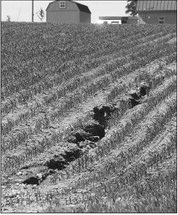much of western Marathon County ….


much of western Marathon County farmland, including the Upper and Lower Big Eau Pleine and Big Rib River watersheds. Current standards require farmers statewide to lose no more than s...


much of western Marathon County farmland, including the Upper and Lower Big Eau Pleine and Big Rib River watersheds. Current standards require farmers statewide to lose no more than s...